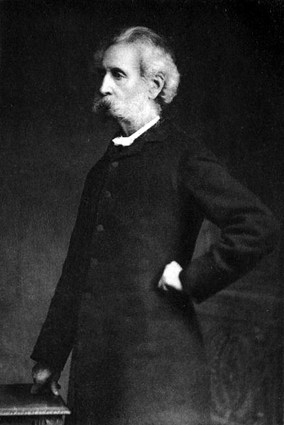Ménage à Trois (or even quatre)?
April 21, 2011 § 5 Comments
The dunnock is a small, brown bird that creeps about on the ground, foraging for insects and creepy-crawlies. Its plumage is drab and puritanical, and its movements, are — for the most part — those of a preoccupied old lady, shuffling down to the shops for a loaf of bread and a pint of milk.
Its apparent modesty and decency prompted the Victorian ornithologist, the Reverend Frederick Orpen Morris, to preach to his congregation that they would do well to emulate the dunnock: “Unobtrusive, quiet and retiring, without being shy, humble and homely in its deportment and habits, sober and unpretending in its dress, while neat and graceful, the dunnock exhibits a pattern which many of a higher grade might imitate, with advantage to themselves and benefit to others through an improved example.”
Morris was born in Ireland, near Cork, the son of a British admiral and his wife, Rebecca Orpen, who was the daughter of the vicar of Kelvargan, in Co Kerry. After attending Oxford and taking Holy Orders, Morris was posted to various parishes in Yorkshire. He was a serious amateur ornithologist and entomologist, publishing many essays and pamphlets, and editing and revising several books. Despite his great output and dedication, it is the quotation above that is most often wheeled out by writers today. And with some glee.
The dunnock is, in fact, anything but unobtrusive and retiring, and its habits are hardly humble or homely. The dunnock is — oh, Reverend Morris, if only you had known! — mad for sex. Arrangements where a female is mated with two males are not unusual. Or sometimes (less frequently) a male has two females. Or sometimes there is even a spot of avian swinging, where two pairs mix and match.
I’m put in mind of this because for the past couple of weeks there has been a great amount of dunnock activity in our garden. And very little of it includes shuffling about on the ground looking for food. Instead, there are three birds dipping and diving, fluttering (and, I presume) flirting. The sexes look the same in this species, so it’s not easy to tell males and females apart. But, judging from the way that one bird (the beta male?) frequently skulks just out of sight, I suspect that we have the more usual dunnock ménage à trois of one female and two males.
According to N.B. Davies in Dunnock Behaviour and Social Evolution (Oxford University Press, 1992) females “made life difficult for an alpha male by actively attempting to escape his close attentions and by encouraging the beta male to mate!” And later he describes that “On several occasions I saw females hiding away with the beta male under a hedge or bush. When the alpha male came by searching for them, they crouched down and remained motionless until he had passed by.”
Why would the female dunnock want to mate with more than one male? Well, it seems that it’s for the survival of her brood. When a female is raising her chicks, a male will help to feed them only if he has copulated with her earlier. So, it makes sense for her to have two regular partners, even if it means scooting off into the bushes with Beta while Alpha is looking the other way.
As for the males’ motives: obviously they want to mate with as many females as possible in order to ensure the survival of their genes. Their mating approach is unusual, to say the least. I’ll let N.B. Davies put it into words: “The act of copulation itself is extraordinary, with a male pecking the female’s cloaca carefully for a minute or so before he mates.” The reason? So that she ejects the sperm of her previous mate. In the dunnock world there is a veritable orgy of copulating, as male birds compete for paternity. Nature, therefore, has given Reverend Morris’s “quiet and retiring” dunnocks particularly large testes: they weigh 64 per cent more than those of most birds of their size, and have sperm reserves about 1,000 times greater.






Goodness – how absolutely fascinating! I’m afraid that Dunnocks come under the multitude of little brown birds that I have no doubt seen but never positively identified. Now I know what they get up to I’ll spend a bit more time checking them out.
LikeLike
They’re not unlike sparrows (and are also known as hedge sparrows), but their bills are more pointy. I’m sure you have them in your garden too, where they are getting up to all sorts…
LikeLike
Your post made me think of the distinguished American actress Mildred Dunnock who originated the part of Linda Loman in Death of a Salesman and Big Mama in Cat on a Hot Tin Roof, among many others. It so happens that she made a sweet little 16mm short subject to be shown in schools called “The Shopping Bag Lady” in which she very much fits your description of the shuffling old lady. Here’s a link to a low-def copy: http://www.youtube.com/watch?v=qKUYCnkEKc0
LikeLike
Thank you, Richard! I’ll watch that now.
LikeLike
Utterly fascinating. Poor Rev, bet he is turning in his grave!
LikeLike